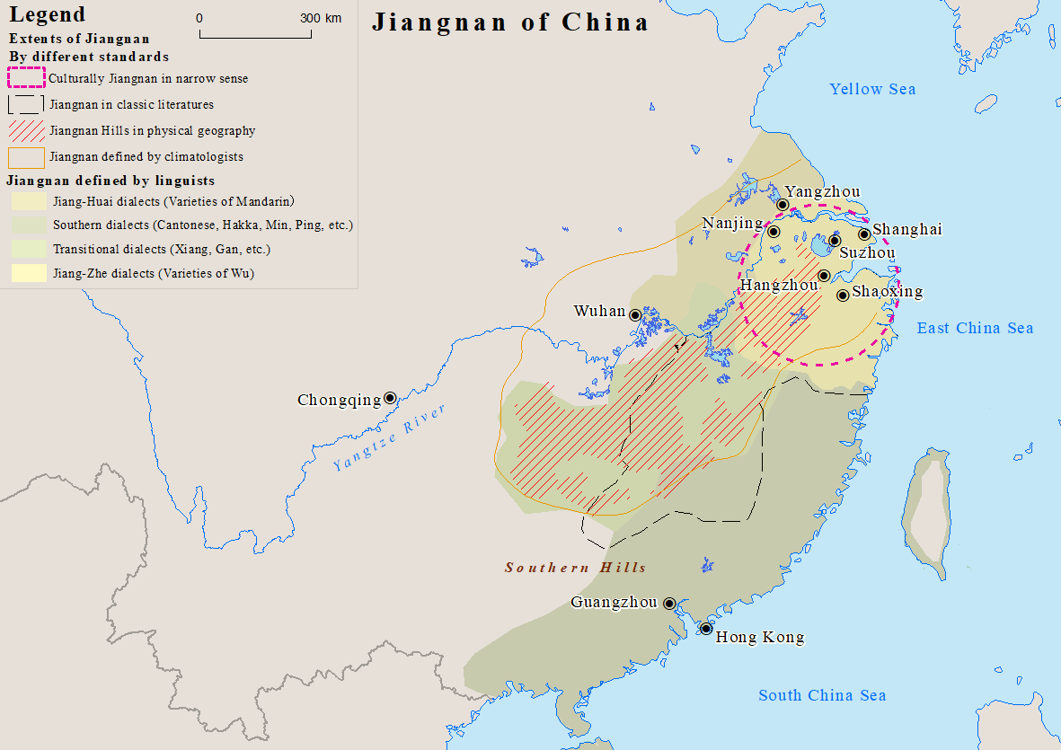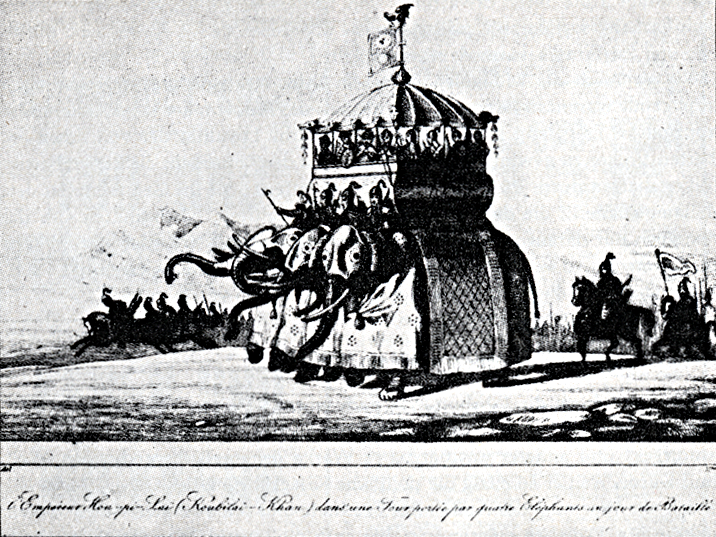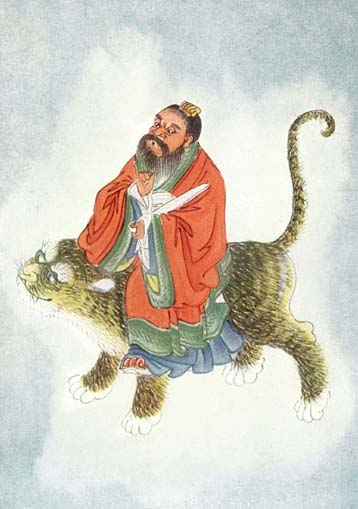|
Zhengyi Taoism
Zhengyi Dao (), also known as the Way of Orthodox Unity, Teaching of the Orthodox Unity, and Branch of the Orthodox Unity is a Chinese Taoist movement that traditionally refers to the same Taoist lineage as the Way of the Five Pecks of Rice and Way of the Celestial Masters, but in the period of the Tang dynasty and its history thereafter. Like the Way of Celestial Masters (''Tianshi Dao''), the leader of Zhengyi Taoism was known as the Celestial Master. Name The term ''Zhengyi'' (Orthodox Unity) has been used since Taoism became an organized religion in 142 AD when Taishang Laojun bestowed the Covenant with the Powers of Orthodox Unity (''zhengyi mengwei'') on Zhang Daoling. Zhang's followers called his teachings the Way of the Five Pecks of Rice while during the Six Dynasties period, the Southern Taoists called it the Way of the Celestial Masters. The Covenant, Five Pecks of Rice, and Celestial Masters all refer to the ''Zhengyi'' branch of Taoism but in different periods. ... [...More Info...] [...Related Items...] OR: [Wikipedia] [Google] [Baidu] |
Zhengyi Rite For The Jade Deity At The Qinciyangdian Of Shanghai
Zhengyi or Zheng Yi (Wade–Giles: Cheng I) may refer to: * Zhengyi Dao, a Daoist movement founded by Zhang Daoling * Zhengyi, a lich (Dungeons & Dragons)#Non-divine liches, lich character from ''Dungeons & Dragons'' * Zheng Yi (author) (; born 1947), of ''Scarlet Memorial: Tales of Cannibalism in Modern China'' * Zheng Yi (pirate) (; 1765–1807), a Chinese pirate of the South China Sea See also *Cheng Yi (other) {{disambiguation ... [...More Info...] [...Related Items...] OR: [Wikipedia] [Google] [Baidu] |
Jiangnan
Jiangnan is a geographic area in China referring to lands immediately to the south of the lower reaches of the Yangtze River, including the southern part of its delta. The region encompasses the city of Shanghai, the southern part of Jiangsu Province, the southeastern part of Anhui Province, the northern part of Jiangxi Province and Zhejiang Province. The most important cities in the area include Anqing, Changzhou, Hangzhou, Nanjing, Ningbo, Shaoxing, Suzhou, Wuxi, Wenzhou, Yangzhou and Zhenjiang. Jiangnan has long been regarded as one of the most prosperous regions in China due to its wealth in trade and very high human development. Most people of the region speak Wu Chinese dialects as their native languages. Etymology The name Jiangnan is the pinyin romanization of the Standard Mandarin pronunciation of , meaning " andsSouth of the [Yangtze] River". Although ''jiang'' () is now the common Chinese word for any large river, it was historically used in Ancient ... [...More Info...] [...Related Items...] OR: [Wikipedia] [Google] [Baidu] |
Ming Dynasty
The Ming dynasty, officially the Great Ming, was an Dynasties of China, imperial dynasty of China that ruled from 1368 to 1644, following the collapse of the Mongol Empire, Mongol-led Yuan dynasty. The Ming was the last imperial dynasty of China ruled by the Han people, the majority ethnic group in China. Although the primary capital of Beijing fell in 1644 to a rebellion led by Li Zicheng (who established the short-lived Shun dynasty), numerous rump state, rump regimes ruled by remnants of the House of Zhu, Ming imperial family, collectively called the Southern Ming, survived until 1662. The Ming dynasty's founder, the Hongwu Emperor (1368–1398), attempted to create a society of self-sufficient rural communities ordered in a rigid, immobile system that would guarantee and support a permanent class of soldiers for his dynasty: the empire's standing army exceeded one million troops and the naval history of China, navy's dockyards in Nanjing were the largest in the world. H ... [...More Info...] [...Related Items...] OR: [Wikipedia] [Google] [Baidu] |
Quanzhen School
The Quanzhen School (全真: ''Quánzhēn'', "All-True", Complete Perfection, Integrating Perfection or Complete Reality) is currently one of the two dominant denominations of Daoism in China. It originated in the Shandong peninsula in 1170. One of its founders was master Wang Chongyang (1113–1170). When the Mongols invaded China the Quanzhen Taoists exerted great effort in keeping the peace, thus saving most Han Chinese lives. Qiu Chuji, a major disciple of Wang, founded the Dragon Gate lineage (龍門派 ''Lóngmén pài''), along with the White Cloud Monastery in Beijing. This tradition remains one of the largest Taoist sects in China today. Scriptures According to Louis Komjathy, the three most important scriptures in the Quanzhen school are: * The '' Dàodéjīng'' * The '' Qīngjìng Jīng'' (清静经, ''Classic of Clarity and Stillness''). * '' Yǐnfújīng'' (''Scripture on the Inner Talisman''), a sixth century text. Komjathy writes that "these texts emphasi ... [...More Info...] [...Related Items...] OR: [Wikipedia] [Google] [Baidu] |
Yuan Dynasty
The Yuan dynasty ( ; zh, c=元朝, p=Yuáncháo), officially the Great Yuan (; Mongolian language, Mongolian: , , literally 'Great Yuan State'), was a Mongol-led imperial dynasty of China and a successor state to the Mongol Empire after Division of the Mongol Empire, its division. It was established by Kublai (Emperor Shizu or Setsen Khan), the fifth khagan-emperor of the Mongol Empire from the Borjigin clan, and lasted from 1271 to 1368. In Chinese history, the Yuan dynasty followed the Song dynasty and preceded the Ming dynasty. Although Genghis Khan's enthronement as Khagan in 1206 was described in Chinese language, Chinese as the Han Chinese, Han-style title of Emperor of China, Emperor and the Mongol Empire had ruled territories including modern-day northern China for decades, it was not until 1271 that Kublai Khan officially proclaimed the dynasty in the traditional Han style, and the conquest was not complete until 1279 when the Southern Song dynasty was defeated in t ... [...More Info...] [...Related Items...] OR: [Wikipedia] [Google] [Baidu] |
Kublai Khan
Kublai Khan (23 September 1215 – 18 February 1294), also known by his temple name as the Emperor Shizu of Yuan and his regnal name Setsen Khan, was the founder and first emperor of the Mongol-led Yuan dynasty of China. He proclaimed the dynastic name "Great Yuan" in 1271, and ruled Yuan China until his death in 1294. Kublai was the second son of Tolui by his chief wife Sorghaghtani Beki, and a grandson of Genghis Khan. He was almost 12 when Genghis Khan died in 1227. He had succeeded his older brother Möngke as Khagan in 1260, but had to defeat his younger brother Ariq Böke in the Toluid Civil War lasting until 1264. This episode marked the beginning of the division of the Mongol Empire. Kublai's real power was limited to the Yuan Empire, even though as Khagan he still influenced the Ilkhanate and, to a significantly lesser degree, the Golden Horde. In 1271, Kublai established the Yuan dynasty and formally claimed orthodox succession from prior Chinese dynasties. ... [...More Info...] [...Related Items...] OR: [Wikipedia] [Google] [Baidu] |
Mongols
Mongols are an East Asian ethnic group native to Mongolia, China ( Inner Mongolia and other 11 autonomous territories), as well as the republics of Buryatia and Kalmykia in Russia. The Mongols are the principal member of the large family of Mongolic peoples. The Oirats and the Buryats are classified either as distinct ethno-linguistic groups or as subgroups of Mongols. The Mongols are bound together by a common heritage and ethnic identity, descending from the Proto-Mongols. Their indigenous dialects are collectively known as the Mongolian language. The contiguous geographical area in which the Mongols primarily live is referred to as the Mongol heartland, especially in discussions of the Mongols' history under the Mongol Empire. Definition Broadly defined, the term includes the Mongols proper (also known as the Khalkha Mongols), Buryats, Oirats, the Kalmyks and the Southern Mongols. The latter comprises the Abaga Mongols, Abaganar, Aohans, Arkhorchin, Asud, ... [...More Info...] [...Related Items...] OR: [Wikipedia] [Google] [Baidu] |
Shangqing School
The Shangqing School (Chinese:上清), also known as Supreme Clarity, Highest Clarity, or Supreme Purity, is a Daoist movement that began during the aristocracy of the Western Jin dynasty. Shangqing can be translated as either 'Supreme Clarity' or 'Highest Clarity.' The first leader of the school was a woman, Wei Huacun (251-334). According to her Shangqing hagiographers, her devotion to Daoist cultivation so impressed a number of immortals that she received revelations from them 31 volumes of Daoist scriptures which would become the foundation of Shangqing Daoism. Later, Tao Hongjing, a man, (Chinese: 陶弘景) (456-536) structured the theory and practice and compiled the canon. He greatly contributed to the development of the school that took place near the end of the 5th century. The mountain near Nanjing where Tao Hongjing had his retreat, Maoshan (茅山 – fr), today remains the principal seat of the school. Shangqing practice values meditation techniques of visuali ... [...More Info...] [...Related Items...] OR: [Wikipedia] [Google] [Baidu] |
Lingbao School
The Lingbao School (), also known as the School of the Sacred Jewel or the School of Numinous Treasure, was an important Daoist school that emerged in China in between the Jin dynasty and the Liu Song dynasty in the early fifth century CE. It lasted for about two hundred years until it was absorbed into the Shangqing and Zhengyi currents during the Tang dynasty. The Lingbao School is a synthesis of religious ideas based on Shangqing texts, the rituals of the Celestial Masters, and Buddhist practices. The Lingbao School borrowed many concepts from Buddhism, including the concept of reincarnation, and also some cosmological elements. Although reincarnation was an important concept in the Lingbao School, the earlier Daoist belief in attaining immortality remained. The school's pantheon is similar to Shangqing and Celestial Master Daoism, with one of its most important gods being the deified form of Laozi. Other gods also existed, some of whom were in charge of preparing spirits ... [...More Info...] [...Related Items...] OR: [Wikipedia] [Google] [Baidu] |
List Of Celestial Masters
This is a list of the Celestial Masters, leaders of Zhengyi Dao, continuing Wudoumi Dao (Way of the Five Pecks of Rice). After the death of the 64th Celestial Master Zhang Yuanxian in 2008, controversy arose over the legitimate succession, with different descendants claiming to be the rightful 65th Celestial Master, including Zhang Jintao and three other claimants in mainland China; and Zhang Yijiang and Zhang Meiliang in Taiwan.The China PostWho’s going to be the 65th Taoist pope?/ref> Eventually, Zhang Jiyu from mainland China was chosen as the successor; vice-president of the Chinese Taoist Association, he resides at the Mansion of the Celestial Master on Mount Longhu. In English the Celestial Master has sometimes been known as Taoist Pope. Notes External linksThe Taoist Association of Celestial Master Chang Website of 65th Celestial Master (claimant) {{DEFAULTSORT:Celestial masters, list of Chinese Taoists Taoism-related lists Taoist religious leaders Taoist priesth ... [...More Info...] [...Related Items...] OR: [Wikipedia] [Google] [Baidu] |
Emperor Lizong Of Song
Emperor Lizong of Song (26 January 1205 – 16 November 1264), personal name Zhao Yun, was the 14th emperor of the Song dynasty of China and the fifth emperor of the Southern Song dynasty. He reigned from 1224 to 1264. His original name was Zhao Yuju but later changed his name to Zhao Guicheng and then finally changed his name to Zhao Yun being elevated to an imperial son. Although he was a descendant of the Song dynasty's founder Zhao Kuangyin (Emperor Taizu) through his son Zhao Dezhao and hence a member of the imperial clan, Zhao Yun was not in line to succeed to the throne as his family had no political status. Shi Miyuan, the Chancellor for many years, collaborated with Empress Dowager Yang and when Emperor Ningzong eventually died in 1224, Shi Miyuan, along with Empress Dowager Yang, supplanted the reigning crown prince Zhao Hong and replaced him with Zhao Yun as emperor, reigning with the era name Baoqing and the temple name Lizong. In his 40-year-reign of Emp ... [...More Info...] [...Related Items...] OR: [Wikipedia] [Google] [Baidu] |
Southern Song Dynasty
The Song dynasty ( ) was an imperial dynasty of China that ruled from 960 to 1279. The dynasty was founded by Emperor Taizu of Song, who usurped the throne of the Later Zhou dynasty and went on to conquer the rest of the Ten Kingdoms, ending the Five Dynasties and Ten Kingdoms period. The Song frequently came into conflict with the contemporaneous Liao, Western Xia and Jin dynasties in northern China. After retreating to southern China following attacks by the Jin dynasty, the Song was eventually conquered by the Mongol-led Yuan dynasty. The dynasty's history is divided into two periods: during the Northern Song (; 960–1127), the capital was in the northern city of Bianjing (now Kaifeng) and the dynasty controlled most of what is now East China. The Southern Song (; 1127–1279) comprise the period following the loss of control over the northern half of Song territory to the Jurchen-led Jin dynasty in the Jin–Song wars. At that time, the Song court retreated south ... [...More Info...] [...Related Items...] OR: [Wikipedia] [Google] [Baidu] |








